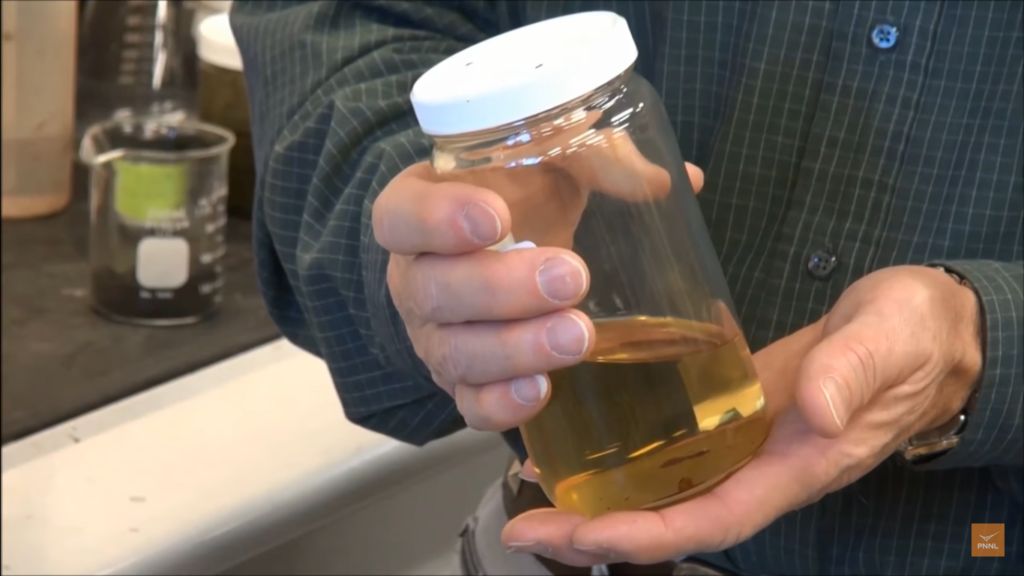Researchers at Pacific Northwest National Labs (PNNL) have developed a new method for treating human sewage to create a biocrude oil product that can be refined into a fuel akin to gasoline, diesel, or jet fuels.
The process is called hydrothermal liquefaction (HTL), and it has been described as a sped-up version of the way the Earth naturally creates crude oil. Researchers apply a considerable amount of heat and pressure to wastewater, breaking down its chemical components into biocrude and an aqueous liquid in minutes.
PNNL says that wastewater treatment plants handle approximately 34 billion gallons of sewage every day. In a Reddit AMA held last week, Justin Billing, one of the scientists on the project, noted that sewage traditionally has three destinations—being turned into fertilizer or soil additive, going in a landfill, or being incinerated. Some wastewater treatment plants (though not all) will also use anaerobic digestion, which “reduce[s] the volume of solids and mitigates the toxic load while also producing methane that can be used for heat and power at the plant,” Billings says. But anaerobic digestion alone can’t solve the whole equation. “From a capital intensity perspective it is reasonable to consider a hydrothermal process like HTL when designing, upgrading, or expanding existing facilities,” he suggested.
Although sewage sludge has been converted to biocrude before, previous methods were considered uneconomical because the sludge had to be dried out before conversion. HTL, on the other hand, pressurizes the sludge to 3,000 pounds per square inch and then heats it up to 660 degrees Fahrenheit (349 degrees Celsius), a process that’s amenable to some liquid being present in the feedstock.
Visit source article with a video from Arstechnica!


Comments are closed